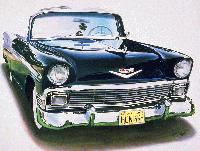Story behind the song
This piece is based on a chord progression consisting of seven chords:
F minor, Ab major, G minor, A# major, A-- minor, C-- major, F minor, C minor, F major. Each chord is played 1-3 beats before moving to the next chord. There are five different major variations that play this chord progression. Each has a different approach to the sound, from driving unison instruments, to slow contemplation, to reggae-like beat, jazz, and world-beat.
Some of the techniques include glissandi and unusual envelopes. For example, the tuba plays some long slides using the following ftable:
f331 0 129 -6 1 4 1 4 1 16 0.7857 16 0.5714 4 0.5514 4 0.5314 4 0.5514 4 0.5714 4 0.5514 4 0.5314 4 0.5514 4 0.5714 4 0.5514 4 0.5314 4 0.5514 4 0.5714 4 0.5514 4 0.5314 4 0.5514 4 0.5714 4 0.5514 4 0.5314 4 0.5514 4 0.5714 4 0.5514 4 0.5314 ; 0 g30 7:4 D+ to E++
The shape of the function table takes a note from the 3/2 of the scale down to the 8/7, a drop of 7/4, almost an octave. There are another 10-12 up and down glissandi used at different points.
Another useful glissando is the up and down and back function table. For each note in the major and minor 6 note just scale that I use, there is a function table to take the note up to the next degree, and then down to the previous one. An example of the function table:
f308 0 1024 -7 1 512 1 0 1.1 256 1.1 0 .9166667 256 .9166667 0 ; g7 2 3 1 = C D- B-
This function table takes a note on the second degree of the just minor scale up to the third degree, and then down to the first. In ratios, it starts at 12:11, up to 6:5, down to 1:1. There is a different glissando function table for every step in the major and minor six note scale.
The six notes I use for minor are 1:1, 12:11, 6:5, 4:3, 3:2, 12:7 and finally 2:1. If reduced, they can be written as 12:12, 12:11, 12:10, 12:9, 12:8, 12:7 and 12:6, or 12:11:10:9:8:7:6. The second degree (12:11) is a pleasantly harsh note, and the six degree (12:7) is also challenging. The six tones of the major scale are 1:1, 9:8, 5:4, 11:8, 3:2, 7:4 and 2:1. In shorthand, they are 8:9:10:11:12:14:16. I make heavy use of triads. In the major scale, the key ones are 4:5:6 and 7:9:11. The 7:9:11, with its heavy tension is resolved to the 4:5:6 in many different inversions. The same technique in the minor scale takes the 12:10:8 as the resolution of the 11:9:7.
There is a good deal of indeterminacy in the piece, where each instrument has many choices at each point. It may be silent, or play one of several possible chords, in several different rhythms. It will always play in the same key as all the other instruments. The time spent in each key is indeterminate, but always 1-4 or more beats, sometimes 0 beats. The result of skipping a chord changes the character of the progression in interesting ways.
The title is taken from a tongue twister used in some bilingual classrooms to help teach English to immigrant children. Try saying “stick shift chevy” five times fast. Or even twice!

